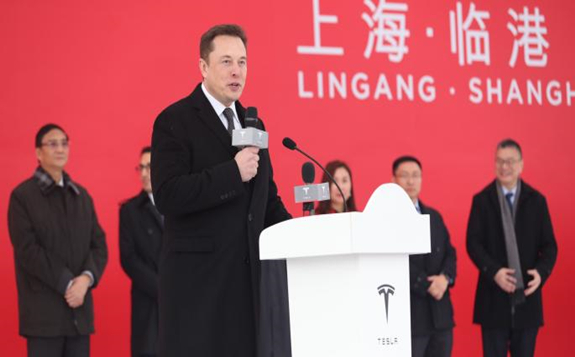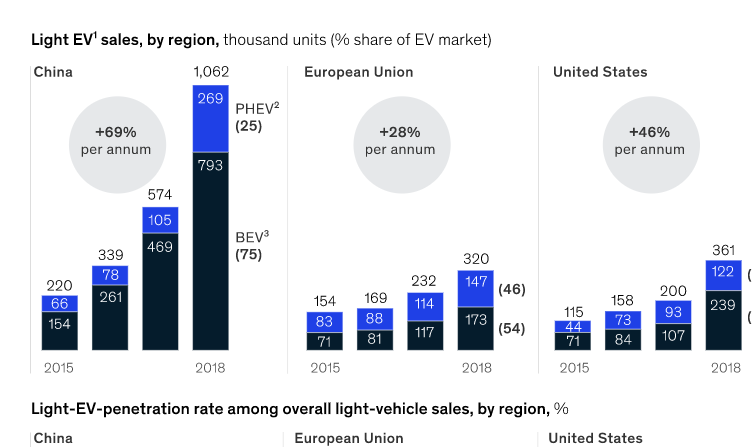As nations attempt to cut down on carbon footprints, electric vehicles are becoming a larger and large piece of the equation. For China, this mission is all the more important, as it has the dubious distinction of being the world's largest greenhouse gas producer.

Why China's A Lucrative Market For EV Makers: China, being the most populous country, has the highest demand for transportation. This factor, coupled with the mandate for China to cut down on pollution has made the country turn toward new energy vehicles, or NEVs. They include predominantly battery energy vehicles, or BEVs, as well as fuel cell electric vehicles, or FCEVs, and hybrid electric vehicles, or PHEVs.
BEVs, or simply EVs, now account for over 80% of the NEVs sold in China.
China spent about $60 billion between 2009 and 2017 to develop the domestic EV industry in a bid to increase the nation's competitiveness in the automobile industry, reduce demand for imported oil and improve air quality, The Diplomat reported, citing Scott Kennedy of the Washington-based Center for Strategic and International Studies.
China's EV market is about three to four times that of the U.S., and the multiple is only going to get bigger, a McKinsey report said. The firm said this will propel Chinese EV makers into the global arena, manufacturing EVs, batteries and charging infrastructure.

The Size Of China's EV Market: About 500 manufacturers have registered to make EVs in China, according to a report by Knowledge@Wharton. Traditional global automakers such as General Motors Company and VOLKSWAGEN AG/ADR are also betting big on the Chinese EV market.
In 2019, about 24.6 million combustion vehicles were sold in China compared to 1.21 million EVs. This compares to 26.82 million and 1.26 million, respectively for both categories in 2018, according to Clean Technica.
Although EV sales growth outpaced that of fossil-driven cars in China, the former account for under 5% of the total market. This share is expected to increase to about 50% by 2025, Cleantechnica.com said, citing analysts at BNEF.
The government has set a target of NEVs forming one-fifth of auto sales by 2025.
Chinese Government Incentives For EVs: China has been incentivizing NEV purchases by offering subsidies. The government, which originally planned to phase out subsidies by 2020, has now extended NEV subsidies for buying NEVs to 2022, with tax exemptions on purchases for two years. The subsidies will be applicable only for passenger cars priced at less than 300,000 yuan ($42,000). The government is also favoring vehicles with swappable batteries.
Subsidies will be cut by 20% in 2021 and by 30% in 2022.
China, which is rationing issuing license plates in big cities to slow down sales in a bid to curb pollution, has exempted NEVs from the restrictions.
Major EV Contenders In China
Some of the major players in the crowded Chinese market are:
Domestic Players
Nio Inc – ADR
BYD
GAC
BAIC
Weitmeister
Chery
Changan Eado
SAIC
FAW
Geely's Polestar
Xpeng
Lixiang Automotive
Foreign Companies
Tesla Inc
Bayerische Motoren Werke Aktiengesellschaft
Toyota Motor Corporation